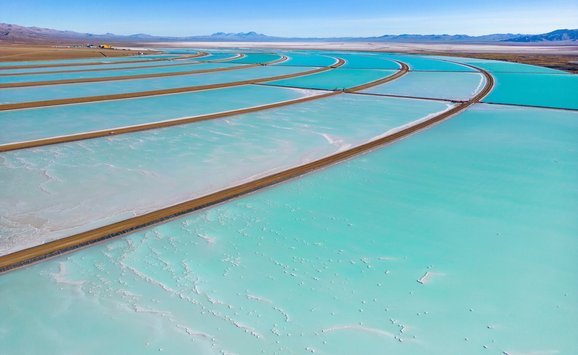Solar energy is not yet the answer to the energy crisis, despite the large amounts of attention and more modest amounts of money that have been lavished upon it since the oil crisis of 1973-74. The general outlook for solar energy can probably be summed up in its treatment in the national energy plan put forth by the Carter administration in April 1977. The plan sets "solar energy in more than 2.5 million homes" as an explicit goal for 1985. A critique of the plan by the Office of Technology Assessment conceded that while this goal might not have a significant impact on national energy patterns, it could be achieved by a "rapid but feasible" expansion of the industry.
The solar goal would be pursued through a federal program of financial incentives and public education. For example, a tax credit would be paid for the installation of qualifying solar equipment, and a joint federal-state program of standards development, certification, training, and information gathering and dissemination would help spur things along. Industry would also get credit for solar investments as part of a proposed 10 percent tax credit for energy conservation measures. Furthermore, it was proposed that the federal government would demonstrate its confidence in solar technology by undertaking a three-year program of up to $100 million for installation of solar equipment in federal buildings. These measures, while not constituting a revolution in energy research, nevertheless reflected a continuing, if qualified, optimism about the use of solar energy to satisfy some of America's energy needs within the next decades.
Government spending for research and development on solar energy also continued to rise. Solar budget levels, while still not of gargantuan proportions, have assumed a respectable level in the ERDA (now Department of Energy) budget: $290 million in fiscal year 1977 and a scheduled total of $305 million in fiscal year 1978. Pilot plants involving various methods of providing direct and indirect solar energy have been funded, as well as a number of heating and cooling facilities, such as first a community center, and then eventually an entire town in Shenandoah, Georgia.

Technical advances. On the technical front, probably the most exciting developments were in direct solar energy—as opposed to biomass, winds, etc.—and especially in the solar generation of electricity. A year ago, solar electricity was being characterized as impossibly expensive, even by the ERDA solar R&D bureaucracy. The situation has dramatically changed in the meantime.
In particular, the generation of electricity by the photovoltaic effect—using the energy from the sunlight to accelerate atomic electrons and so generate electricity directly—had been thought impossibly expensive: perhaps twenty times as expensive as conventional sources. A major cause of the projected high cost was the need to use crystals of silicon or other materials. However, during the past year there has developed at least the possibility that silicon in a noncrystalline glassy ("amorphous") form could be used instead, a much cheaper way of proceeding. Large areas of photovoltaic substances can, in principle, be quickly formed by spray techniques or by simple chemical deposition. This "thin film" technique has yet to be proved out in practice.
But it is only one promising development out of many: cheaper crystallization techniques, more energy-efficient gallium arsenide crystals, and systems that concentrate the solar energy by stacking cells, or by changing natural light frequencies into more useful components of the spectrum.
Furthermore, brand new ideas keep cropping up. One idea, presented before a congressional committee, is to rectify and use the ordinary random motions of electrons in a solar-heated wire to produce electricity. Whether such an idea proves out or not, it may be an example of a wealth of technical possibilities for solar electricity that have not yet been tapped.

Economic assessments. Reports or drafts of three major studies on the economics of these systems have recently appeared: the conclusions are mixed.
A study by a consulting group for the Joint Economic Committee of the U.S. Congress has predicted costs of $10 per square foot of solar collector, a figure which they predict would make solar practical for some purposes in a few areas now and in other areas of the United States later, depending on the price of competing fuels. Incidentally, because of the higher price of natural gas and the greater heating loads in Minnesota and Maine, those two not remarkably sunny states are picked as the prime candidates for early implementation of solar systems!
Another study by the Office of Technology Assessment was also fairly optimistic.
A third study by the MITRE Corporation predicts costs approximately twice as high as the other studies. This pessimistic outlook may have to be taken seriously, because the MITRE study goes into a relatively deep analysis of component costs and engineering designs.

Grassroots enthusiasm. Despite what the experts may or may not say, one of the most interesting developments with-in the past few years has been the growing enthusiasm of many homeowners, architects, and planners all over the country for solar energy. A still small but definitely thriving industry has grown up to supply goods and services for the domestic use of solar energy. From the viewpoint of the rest of society, this means that we will all gain valuable experience on the key questions of cost and, even more important, long-term reliability of solar systems, through the sacrifices and determination of a small group of social pioneers.
The grassroots enthusiasm for solar has been pumped up by the work of the controversial sage of soft technology, Amory Lovins. Lovins' influential articles and his latest book—Soft Energy Paths: Toward a Durable Peace—plump for a way of life that is much less dependent on large complex centralized energy systems. In his scenarios for the future, solar energy plays a key role. This role includes not only the home solar systems that are commonly explored by the experts, but also more radical systems having seasonal storage capabilities, where the entire job is done by solar without any backup supply of fossil fuel or electricity.
From the point of view of Lovins and many sympathizers, solar energy is economic now; but even if it were not narrowly "economic" it would still be economic in the larger sense of the word. Not only would it eliminate the usual pollution costs of coal and nuclear energy they argue, but it would encourage the design of energy systems that are more appropriate to end use. Indeed, they believe that greater reliance on solar energy would help prevent the growth of centralization, with the domination of society by a bureaucratic and technocratic class structure, the loss of local values, and the neglect of values of individuality in economic and political life.
Therefore the future of solar energy may depend, not only on hard dollars and cents, but also on common sense: on attitudes toward society and on controversial assessments of the condition of civilized man.







